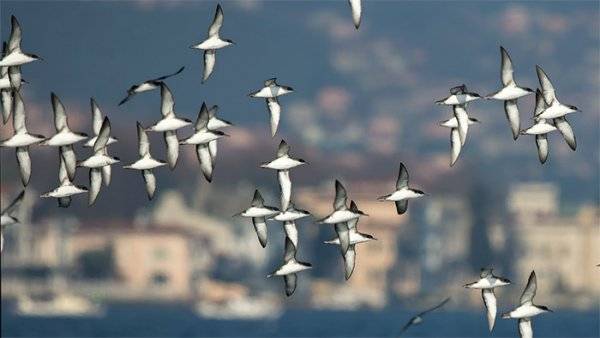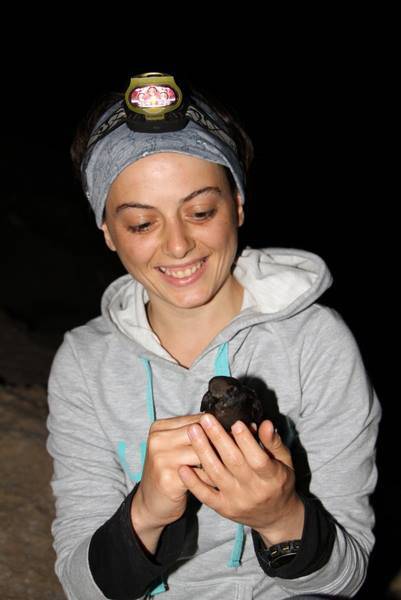Guest blog post by Dilek Sahin

The Yelkouan Shearwater (Puffinus yelkouan) is a globally threatened seabird species endemic to the Mediterranean. Its threat status is precautionarily assessed as Vulnerable. It is thought to be undergoing a rapid population decline, caused by extremely low breeding success and adult survival owing to fisheries bycatch and predation by introduced mammals (BirdLife International). However, recent evidence suggests the population may be increasing at some colonies.
The Yelkouan Shearwater Project in Turkey started in 2010 with the aim of collecting yearly systematic data on shearwaters passing the Bosphrous. Before, there were very old observations from the strait. These observations were mainly reporting the seasonal fluctuations in numbers and behaviour of yelkouans within a year. After 5 years of systematic counts in the Bosphorus what we currently have is actually not very different than these records, except some extraordinary details.
In February 2011, when the project was about to finish, we counted 55 thousand Yelkouan Shearwaters in only four hours. The vast majority of the birds were flying towards the south. The number and the almost one-way movement was exceptionally higher than the previous records. Then we decided to keep counting for another year. The decision was convenient as the record was broken with 75 thousand Shearwaters recorded in February 2012. These two observations were recorded in the first week of February and showed us that the early February might be an important period in terms of Yelkouan Shearwater activity in the Bosphorus. In 2014 the team started to cover the whole week to catch this peak day since –to the best of our knowledge- this phenomenal passage is occurring only one day in a year. And just in the right time, around the same day as in the previous records, 90 thousand birds were recorded. I remember every moment of that count, we were two experienced bird watchers counting and after four hours we were totally exhausted!
90 thousand was the upper limit of the estimated global population in 2014. It was obvious that the global population was underestimated due to the difficulty of getting precise numbers at the breeding colonies and probably due to some undiscovered colonies. These challenges led us to consider the Bosphorus project as an important tool to obtain an idea about the global population. Of course, we are not sure about the proportion of the global population that these birds are representing or whether they are non-breeders or breeders but still this basic study would help us to solve the puzzle.
Although we have more questions than the answers now, this four-years of work showed us that no matter what proportion of the global population passes the Bosphorus, this area is of high importance in the conservation of this enigmatic species. Because Yelkouan Shearwaters are not flying over land to reach the Black Sea where the rich anchovy stocks live, they have to cross two Turkish straits, namely the Bosphorus and the Dardanelles.
LINKS:
More information on the project: http://yelkouanshearwater.org/en
Volunteer form: http://yelkouanshearwater.org/en/volunteer/
Facebook: https://www.facebook.com/yelkouanshearwater
Twitter: https://twitter.com/medyelkouan

Dilek Sahin above is a Biologist and PhD student at Bogazici University. Most of her work is about seabirds. She has been studying the activity of Yelkouan Shearwaters in Turkish Strait System through coastal and ship-based counts since 2010. Currently, she is also organising the first seabird by-catch project in Turkey, and also helping to co-ordinate the Turkish Breeding Bird Atlas.

